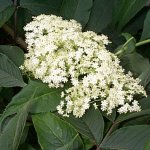Succession and Evolution
In the creation of a new system, it is imperative to assess the situation and determine what sequential steps one must take to be effective. The first step is to assess the greatest challenges and determine how to respond to them. One of the biggest challenges in our urban environments at present is the lack of focus on locality. The majority of our goods and services are trucked in from far away and the costs of transportation and fuel are either discounted or subsidized such that they are not reflected in the cost of the goods. A second challenge is that many people feel isolated from their neighbors. Through reconnection with our neighbors and local resources, we may begin to heal our urban environments. The City Repair Project in Portland, OR has been developing a unique model for urban renewal (www.cityrepair.org) through facilitating community interaction.
We may find ourselves caught up in scale as we search for a way to create change. It is difficult to see how our individual actions can make a difference. In permaculture, we create guilds as communities of plants on which our system is based. The individuals in the guild are strengthened through the support of the community. Likewise, we can choose to create guilds in our local environments to promote change. Together, we gain power as we encourage and support each other. Agrarians in America’s past used the grange halls as a method for creating a human guild that had greater political leverage. We can choose this model for the future.
Purchasing power is one of the best ways in our culture to create a difference. If we truly think about where our money is going, who and what practices we are supporting, we can create the world we desire. We can explore parallels between the natural world and our urban settings to make these choices.
In the permaculture gardens we create, be they plant-based gardens or social gardens, we begin by ensuring that there is ample nitrogen from nitrogen fixing species (artists and locally owned stores) to catalyze our garden. Dynamic accumulators, insectary plants, aromatics, and groundcovers (food coops, mass transit, peace groups, community gardens) are distributed throughout the system to ultimately support the food-bearing plants (ourselves). By carefully selecting from a diverse palette of plants and social structures, we mix together the elements we need to create the guild that will support our lives.
This framework is useful as we explore the ways that we can have a positive impact in our urban environments. We can advance succession as we find substitutes locally for the invasive weeds in our systems. Through exploring the different facets of our communities and addressing our habits of consumption, we can use permaculture principles and ethics to make sustainable choices that achieve ecological balance.
Home |
Permaculture |
Edible Flowers |
Events
Contact us
| 

